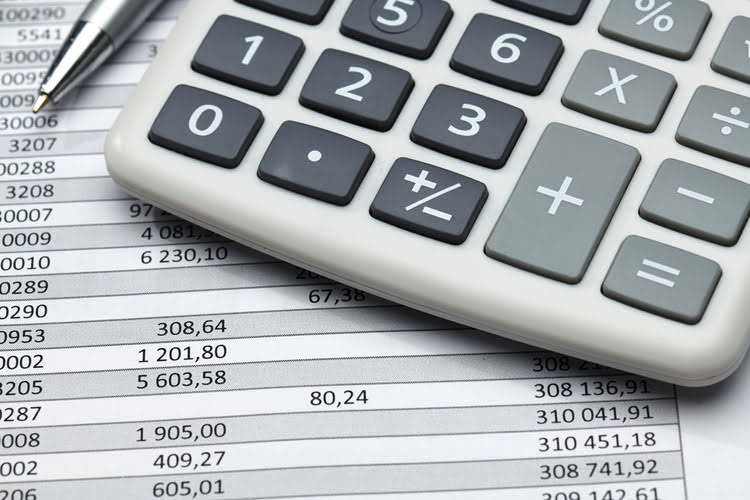
Enerpize automates COGS calculations by integrating real-time inventory tracking with purchase and sales records. It ensures accurate financial reporting by automatically updating inventory values and linking transactions, minimizing human errors and enhancing efficiency. With automated financial reports and seamless transaction tracking, businesses can maintain precise COGS calculations, improve profitability analysis, and focus on strategic growth without manual accounting burdens. Businesses use different accounting methods to calculate COGS, affecting how inventory costs are recorded and reported. The choice of method can influence financial statements, tax liabilities, and profitability. This means that the toy company spends $10 on direct labor and manufacturing overhead for each doll it produces.

Identify Beginning Inventory
How to use conversion cost for management purposes, such as setting prices, budgeting, and performance evaluation. They invested ₹2,00,000 in galvanised iron sheets, ₹1,50,00 in aluminium sheets, ₹80,000 on SBR tyres, and paid ₹1,00,000 as employee wages. The ending inventory is the value of unsold goods remaining at the end of the period.
- In the food industry, converting raw food materials into edible food items is labour-intensive and requires specialised machinery.
- They invested ₹2,00,000 in galvanised iron sheets, ₹1,50,00 in aluminium sheets, ₹80,000 on SBR tyres, and paid ₹1,00,000 as employee wages.
- Conversion costs reflect a company’s total amount spent converting raw materials into fully-furbished products.
- Managers can then use this information to allocate resources, set goals, reward or motivate the workers, or make outsourcing or insourcing decisions.
- This report shows the costs used in the preparation of a product, including the cost per unit for materials and conversion costs, and the amount of work in process and finished goods inventory.
What Is Conversion Cost? – Formula, Examples, Calculation
Conversion costs are beneficial, especially for manufacturing businesses which have to deal with conversion on a large scale daily. They help the company to take important financial decisions and help them to bring efficiency to the production system. Conversion costs are a crucial aspect of manufacturing and production processes, representing the expenses incurred in transforming raw materials into finished goods. Understanding conversion costs is essential for businesses to effectively manage their production costs and optimize operational efficiency. In this article, we’ll delve into what conversion costs are, provide the formula for calculating them, and offer examples to illustrate their application.

What are Conversion Costs?
Once you assess conversion, you can use the information to better allocate your budget and improve returns. Or you can use the conversion cost to confirm that your changes to campaigns were effective. Timber, glue, nails, glass and finishing materials have been treated as direct materials because they all become part of finished and ready to sell conversion cost formula table. The conversion cost, when used in conjunction with prime cost, helps reduce waste and gauge other operational inefficiencies that may be present within the manufacturing facility. If your conversion goal is more than just a website visit, look at your landing pages.
Conversion Cost Formula and Definition

You could use that information as an inspiration to make changes and see if you can improve it. Bruce’s Bike Company is a bicycle manufacturer that specializes in high-end 10-speed bikes. Bruce is trying to figure out what his conversion costs are for the quarter in order to estimate his finished inventory for the interim financial statements. Conversion costs are the costs that are incurred by manufacturing companies when converting raw materials into finished goods. Therefore, one difference between the two concepts is that manufacturing overhead is only net sales included in conversion costs.
- This information can be useful for cost accounting and management purposes, which we will discuss in the next topics.
- The 1,200 ending work in process units are only 35% complete with regard to conversion costs and represent 420 (1,200 × 35%) equivalent units.
- As can be seen, labor is the cost that mainly determines the transformation or conversion process, then from here on there must be costs of a similar nature or of a similar impact.
- It’s important because it will become the cost of the inventory which will impact the selling price.
- In short, it is the cost of a product incurred by a company while manufacturing it.
Therefore, in order to achieve optimization of the production process, companies strive to keep the conversion costs minimum. Conversion costs are essential for accurately pricing products, managing expenses, and optimizing production processes. They offer insights into the efficiency of manufacturing operations and potential areas for cost reduction. In this section, we will delve into the topic of conversion cost efficiency and explore strategies to enhance the conversion process while minimizing costs. By optimizing the conversion process, businesses can achieve higher conversion rates and maximize their return on investment.
- The expenses involved in this transformation are known as the conversion cost of a product.
- Examples of direct labor include assembly line workers, machine operators, and technicians.
- The company wants to know its conversion cost from the following mentioned information.
- Conversion costs refer to the expenses incurred during the transformation of raw materials into finished goods.
- In this section, we will explain how to calculate conversion cost per unit and how to use it for different purposes.
- To better understand how to calculate the Cost of Goods Sold (COGS), let’s go through some practical examples using different scenarios.
- Conversion costs play a significant role in determining the overall cost structure of manufacturing operations.
By analyzing conversion costs, businesses can determine the cost structure of their products and set competitive prices that ensure profitability. This indicates that 25% of the total manufacturing cost is attributed to conversion costs. During June, Excite Company’s prime cost was $325,000 and conversion cost was $300,000. A periodical review of the firm’s prime cost is crucial to ensure the Bookkeeping for Painters efficiency of its manufacturing process.

Conversion Cost Examples
Remember that you can define conversion however you want, such as the number of sales and number of operating leverage dol formula + calculator signups for your email list. The following are some of the most commonly used conversion metrics when assessing conversion cost. Each has its own example of how you would assess conversions with your given definition for the conversions. Conversion costs are calculated in order to know the cost per unit, which assists the company in deciding a price for the product. Yes, conversion costs can change based on factors like labor rates, overhead expenses, and efficiency improvements. Some other examples of manufacturing overheads are insurance, building maintenance, machine maintenance, taxes, equipment depreciation, machining, and inspection.
Understanding the conversion cost formula is crucial for effective cost accounting and management. By analyzing the various components of conversion costs, businesses can make informed decisions to optimize their production processes and enhance profitability. The 1,200 ending work in process units are only 35% complete with regard to conversion costs and represent 420 (1,200 × 35%) equivalent units. The true cost a company uses in the process of turning raw materials into finished goodsincludes both overhead and direct labor. Managerial accountants and production managers measure these conversion costs to estimate production expenses, develop product-pricing models, and estimate the value of finished inventory. Managers also use these costs to evaluate the efficiency of the production process and identify waste.

Yorumlar kapalı.